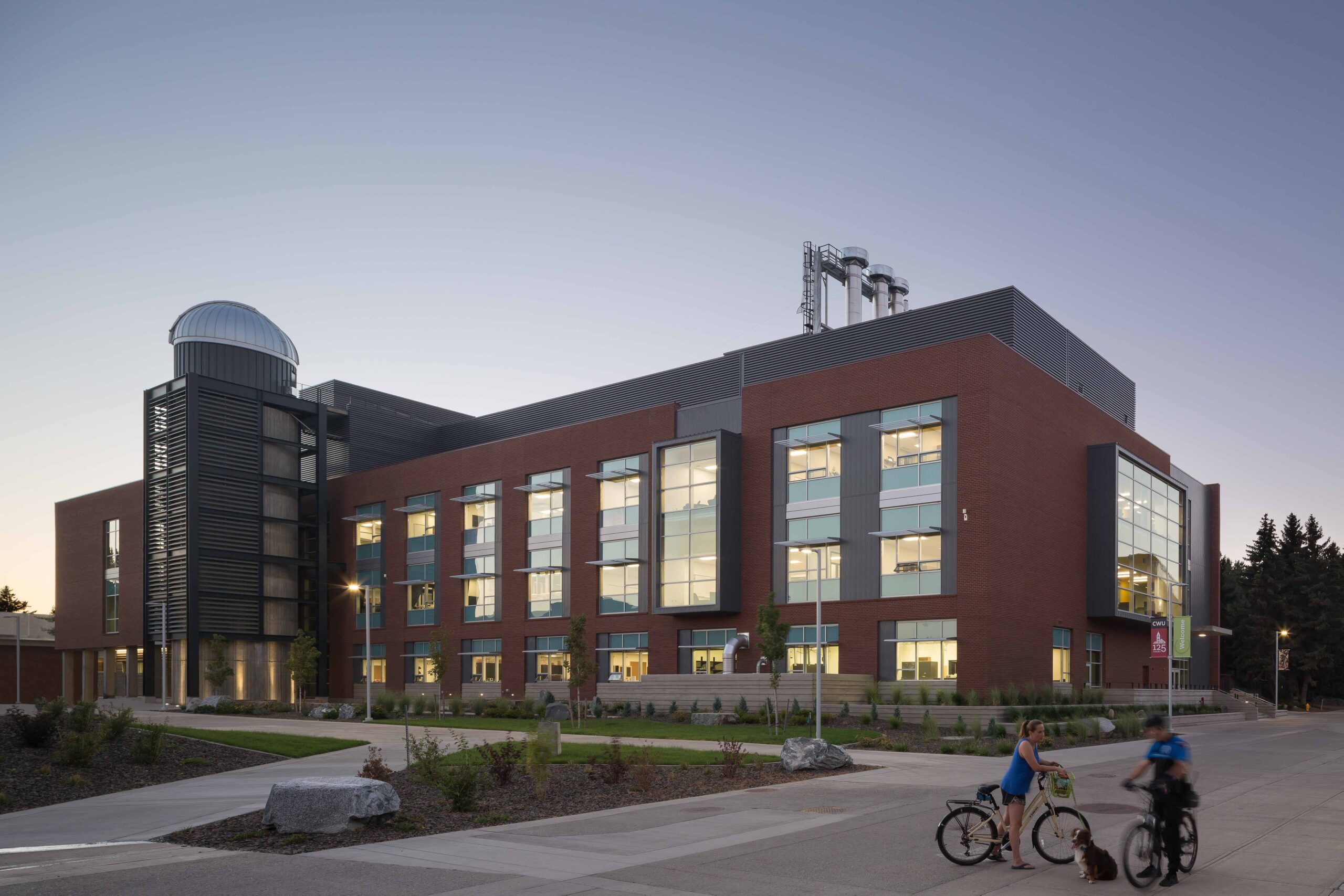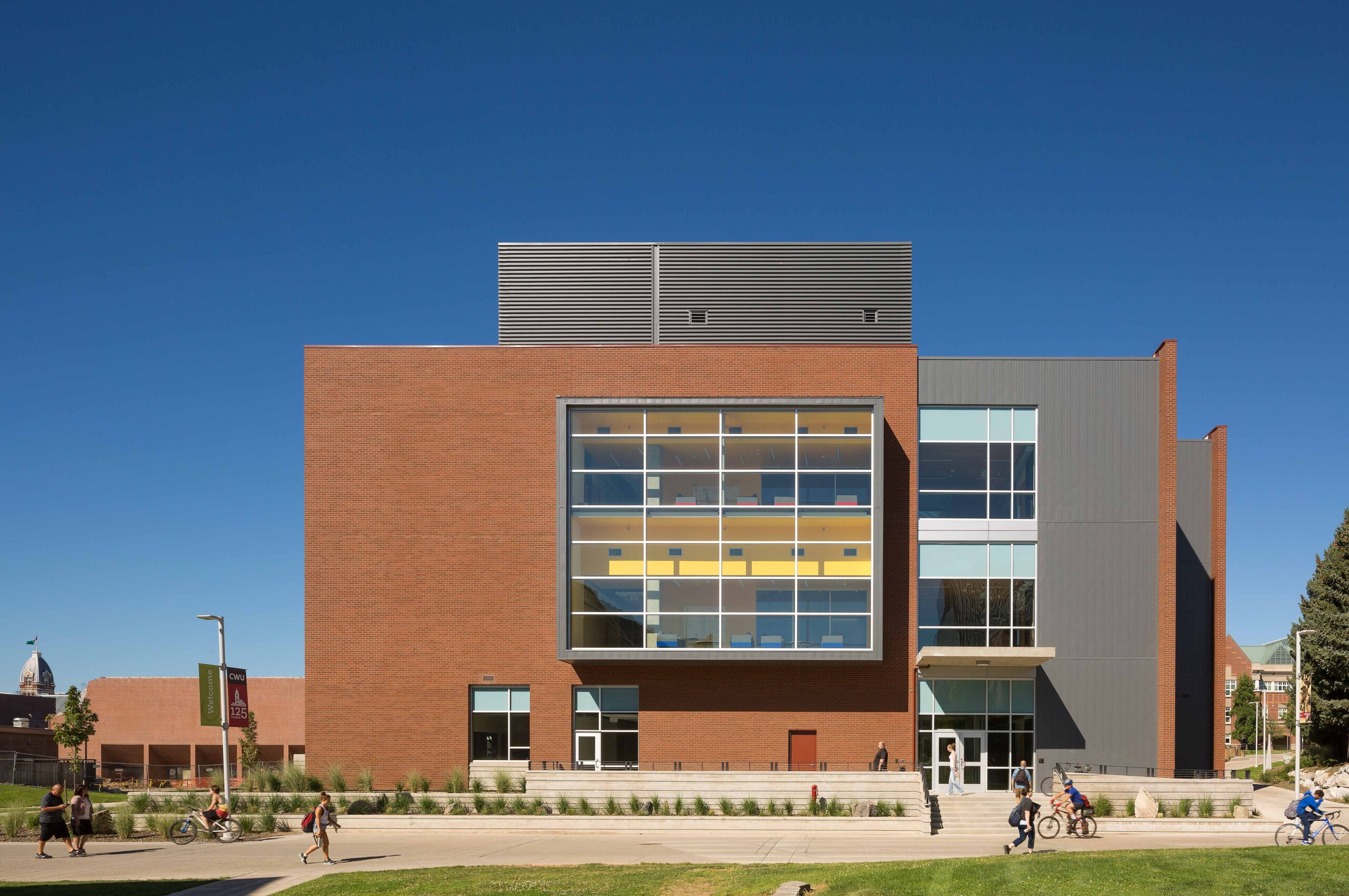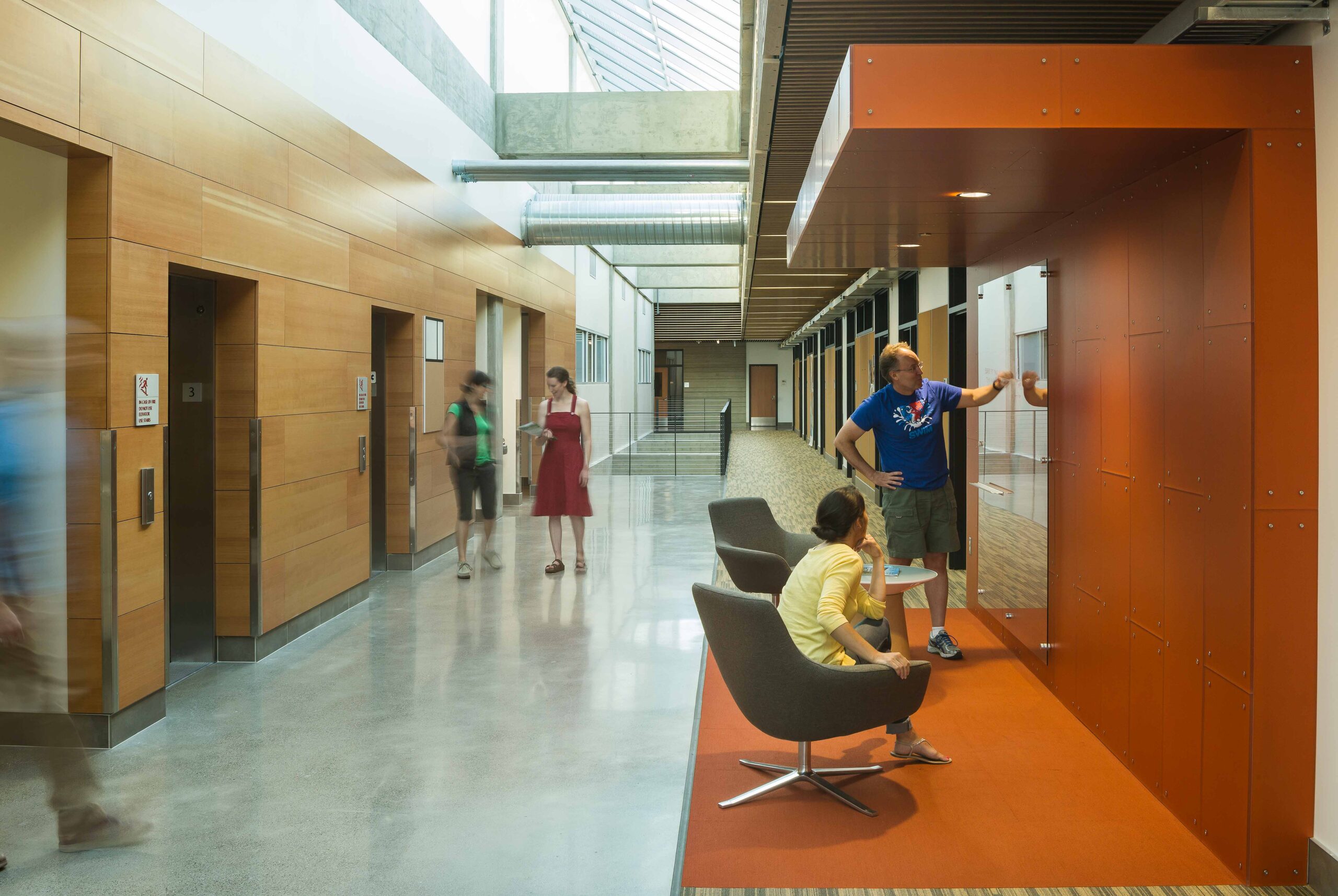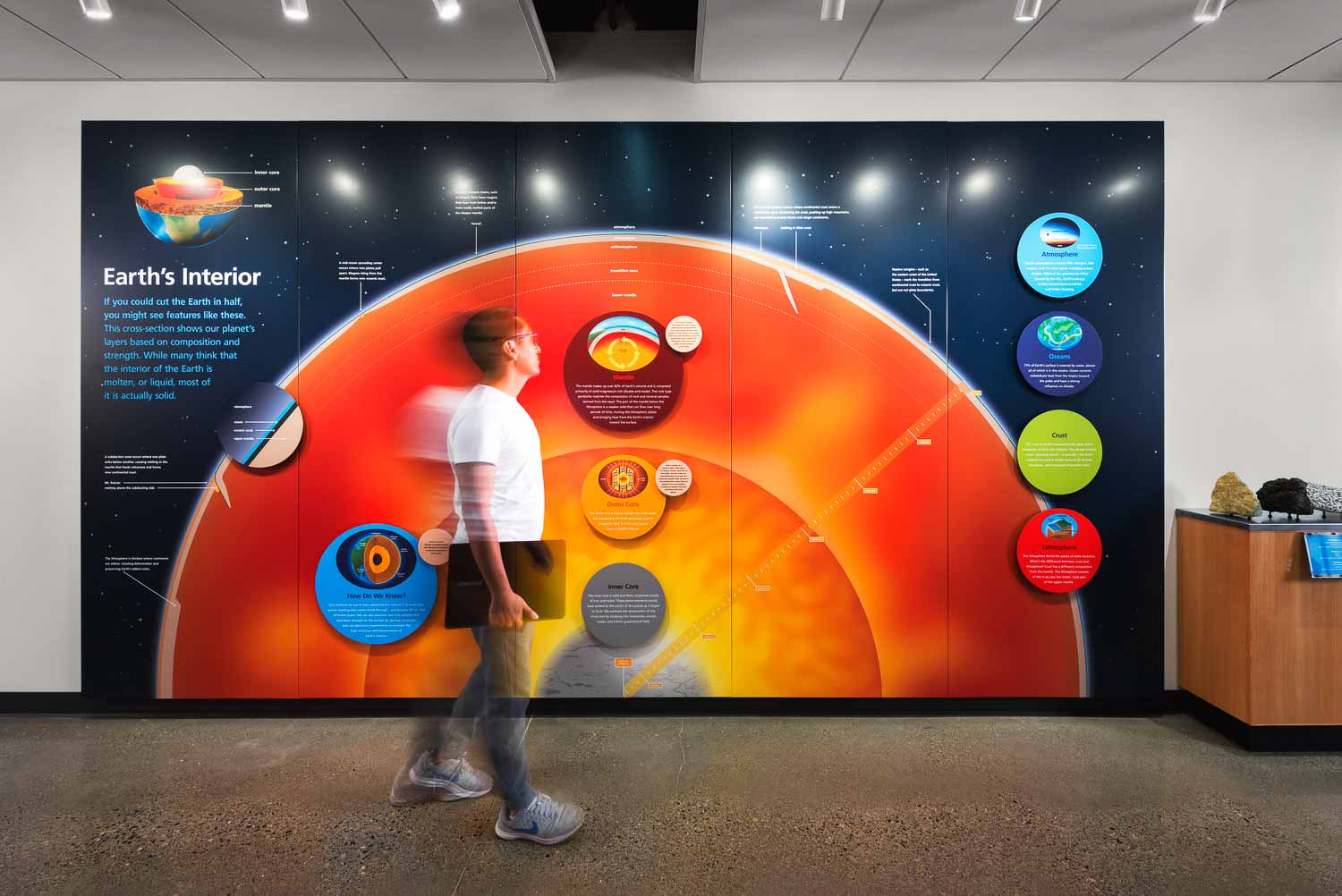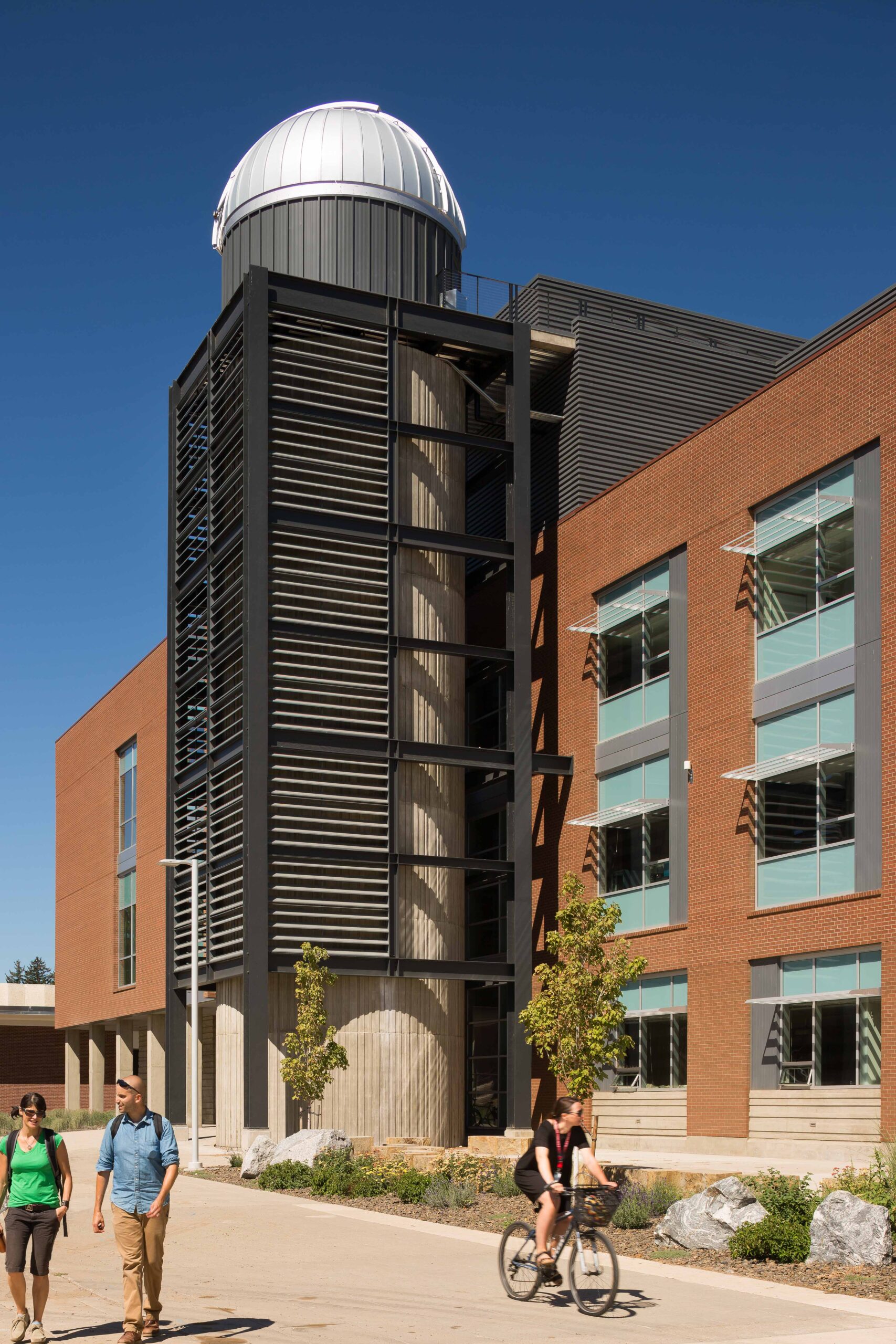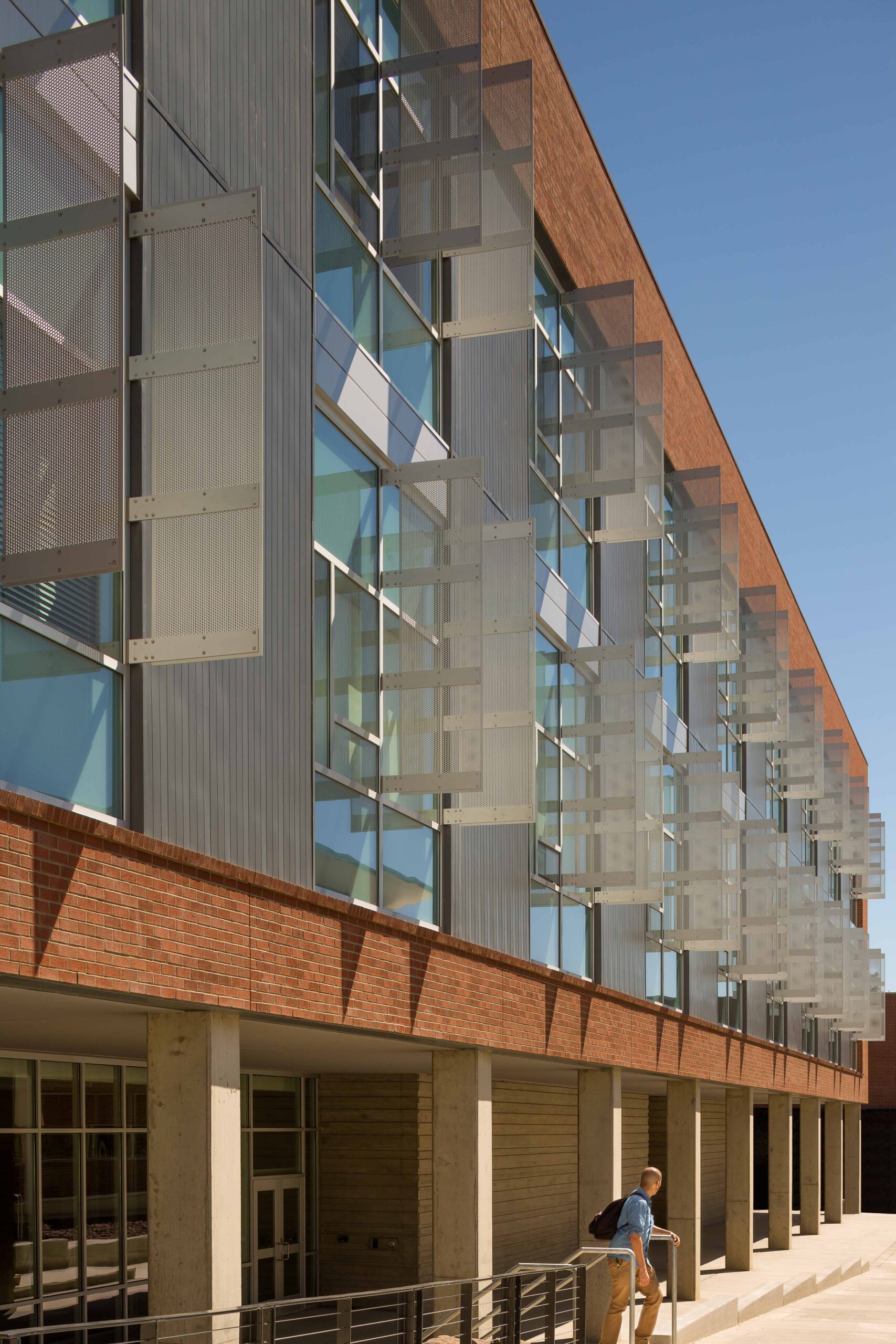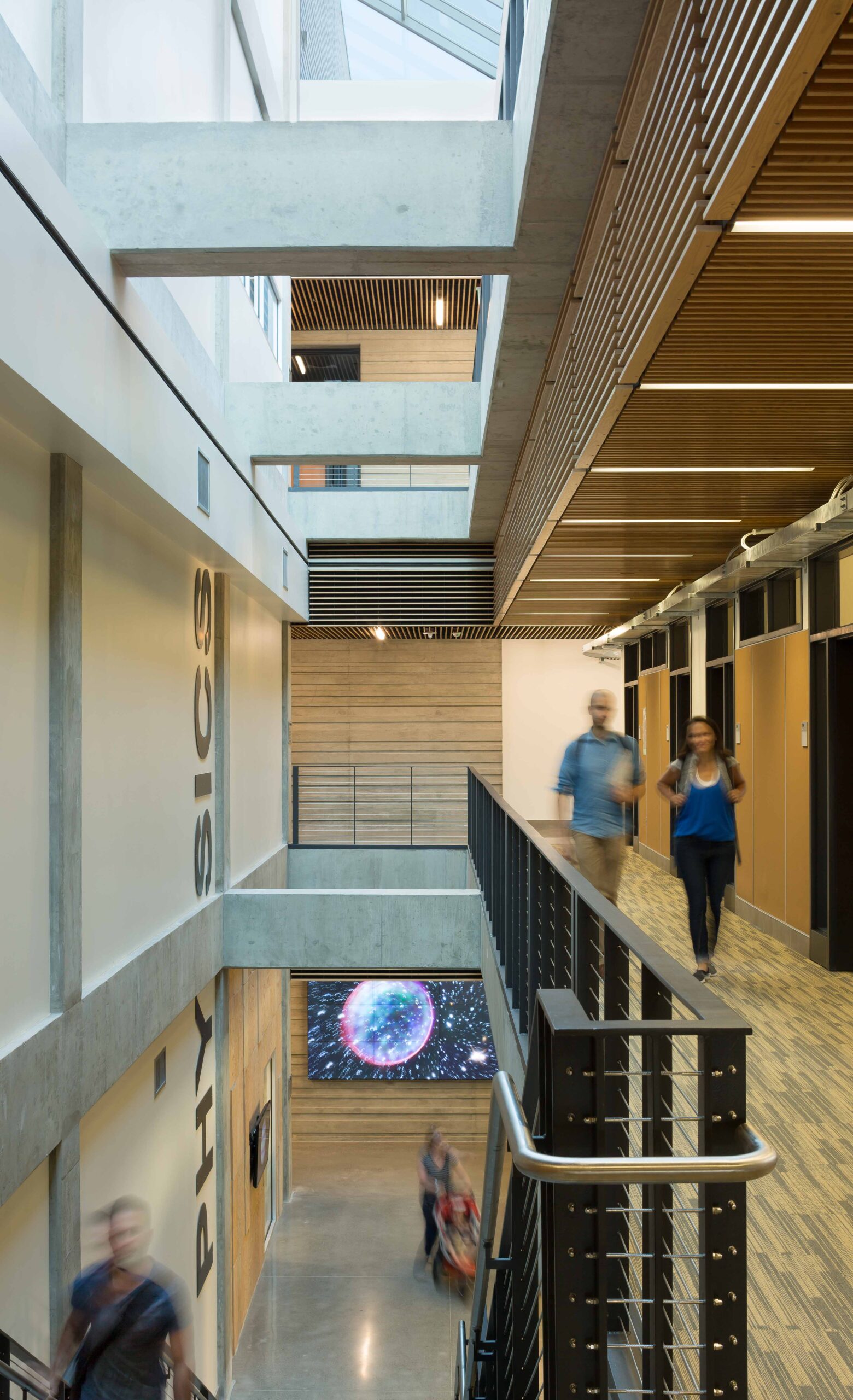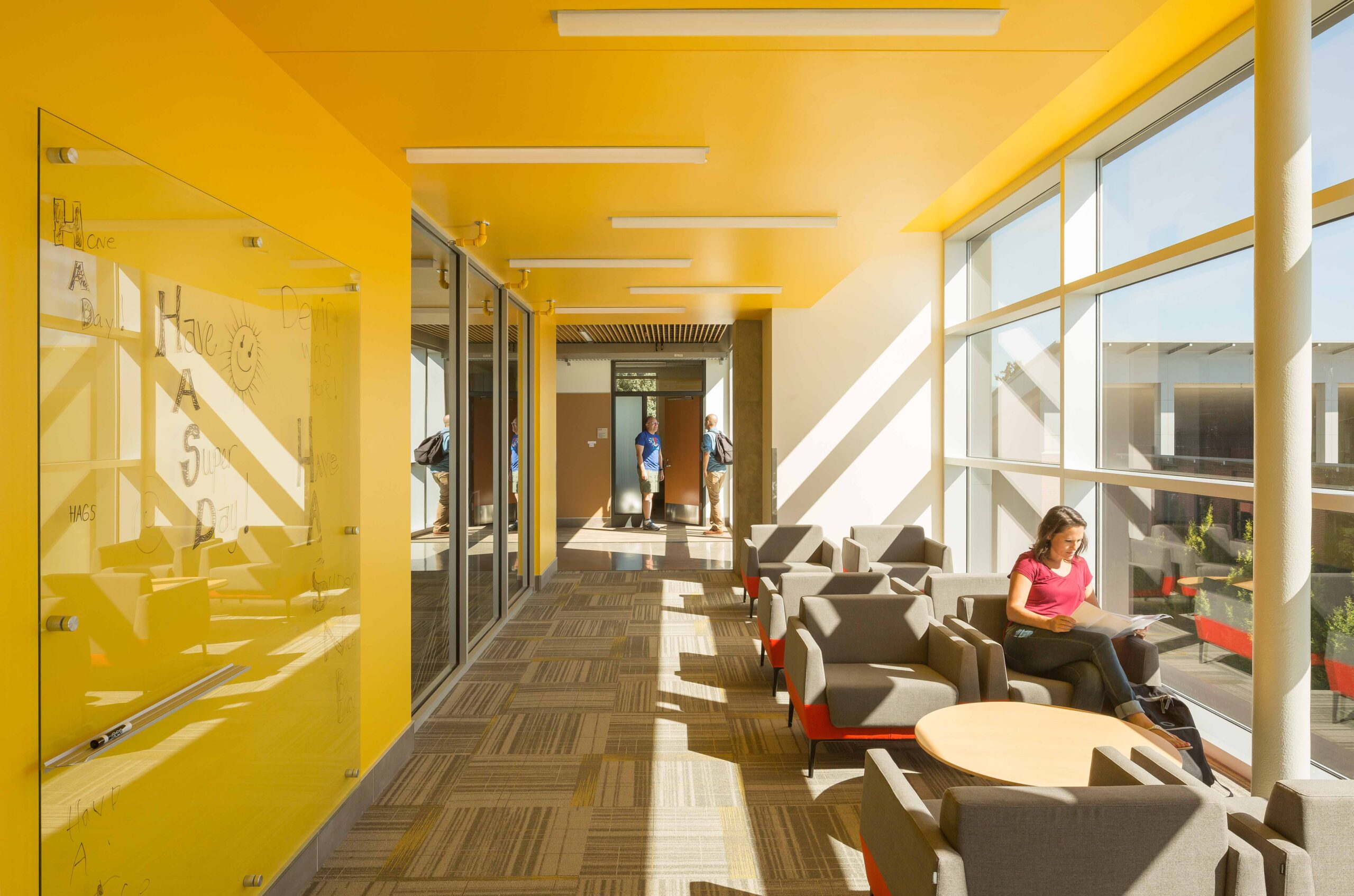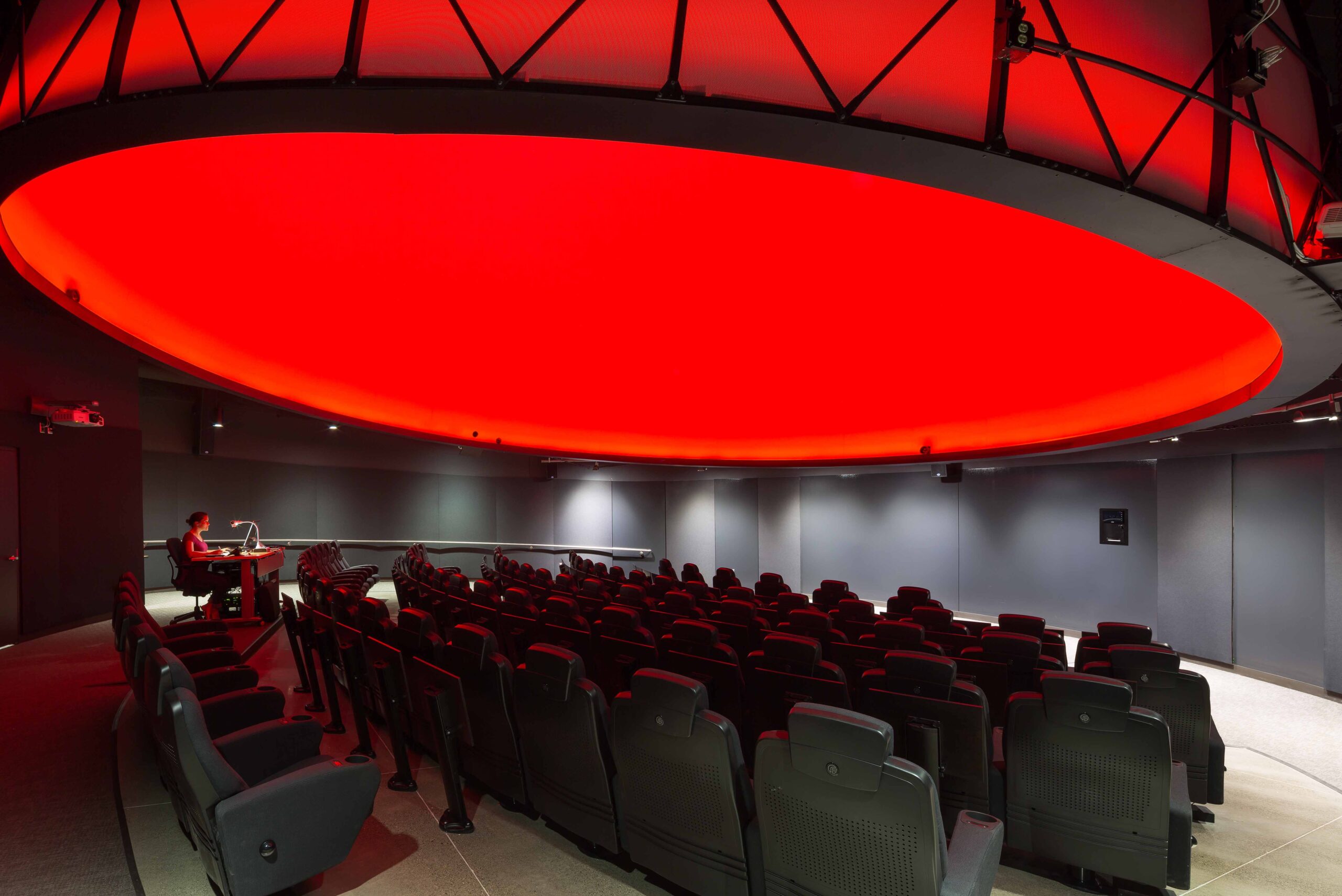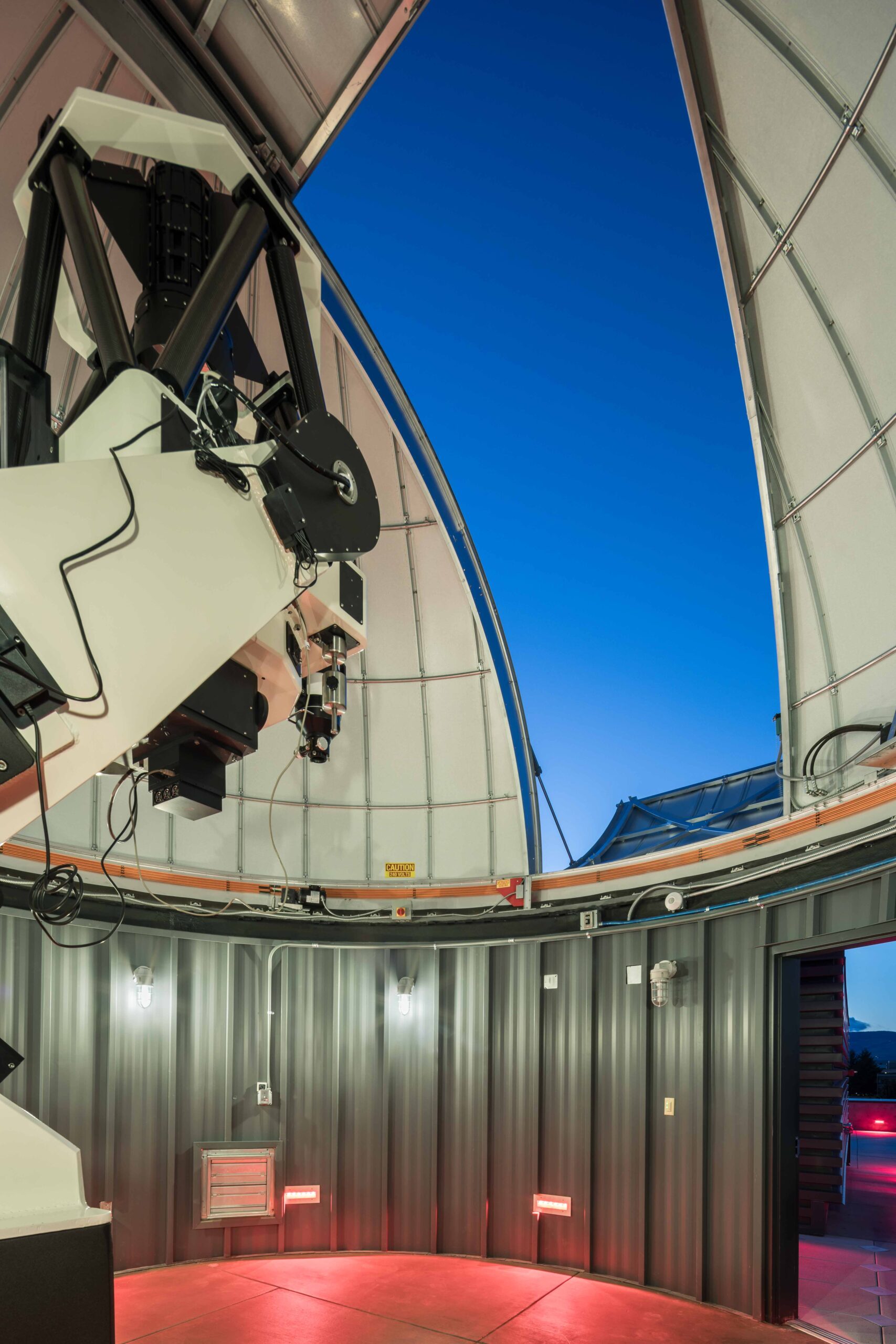Aspiration & Achievement
A transparent environment presents the building as a ‘living learning tool’ combining science disciplines in programmatic overlaps to increase functional learning and enhance scientific discovery through cross pollination of curricula.
RECOGNITION
2017 Learning by Design Architectural Awards of Excellence, Honorable Mention
2016 AGC Build Northwest, Award Winner
LEED Gold
PROJECT DETAILS
As the design of science labs has changed dramatically over the years, this building incorporates evolving trends in science and how science is taught.
To make science appealing and accessible, the building puts science on display to students. A beacon of science, the six-story, silver-domed, concrete observation tower houses the most powerful telescope in the region. Glass, brick, and board-form concrete adorned with stone and sheet metal accents, all of-the-earth materials, are a contextual nod to the campus’ existing buildings.
Geology, Physics, and Astronomy spaces are dispersed throughout this 5-story building and share resources and flexible spaces to facilitate both structured and informal interactions. Wet and dry teaching labs, a wood and metal fabrication shop, laser optics lab, rock crushing room, biotechnical clean rooms, an ice core laboratory, an anechoic chamber, mineral labs, and a planetarium are situated to foster cross-fertilization of ideas. Outdoor learning spaces, such as the rooftop astronomy lab and a ground-level amphitheater promote health and wellness while stargazing or collecting geologic specimens for identification and exploration.
The open, three-story corridor, lined with informal breakout areas, is topped with a building-length sky-light that provides natural light and serenity. The interior finishes of concrete, polished wood wall panels, and suspended wood grille ceiling provide a soothing color palette drawn from nature and provides students with a lived experience. Formal and informal learning spaces are intermixed with student breakout spaces and experiential learning opportunities designed to foster an unprecedented degree of collaboration and encourage impromptu student/teacher interactions. An 8-panel geologic timeline and technological display provides instruction on the historical events that contributed to the region’s formation.
Discovery Hall was designed as a scientific showcase promoting critical thinking and creativity through desegregation of traditional instruction.
